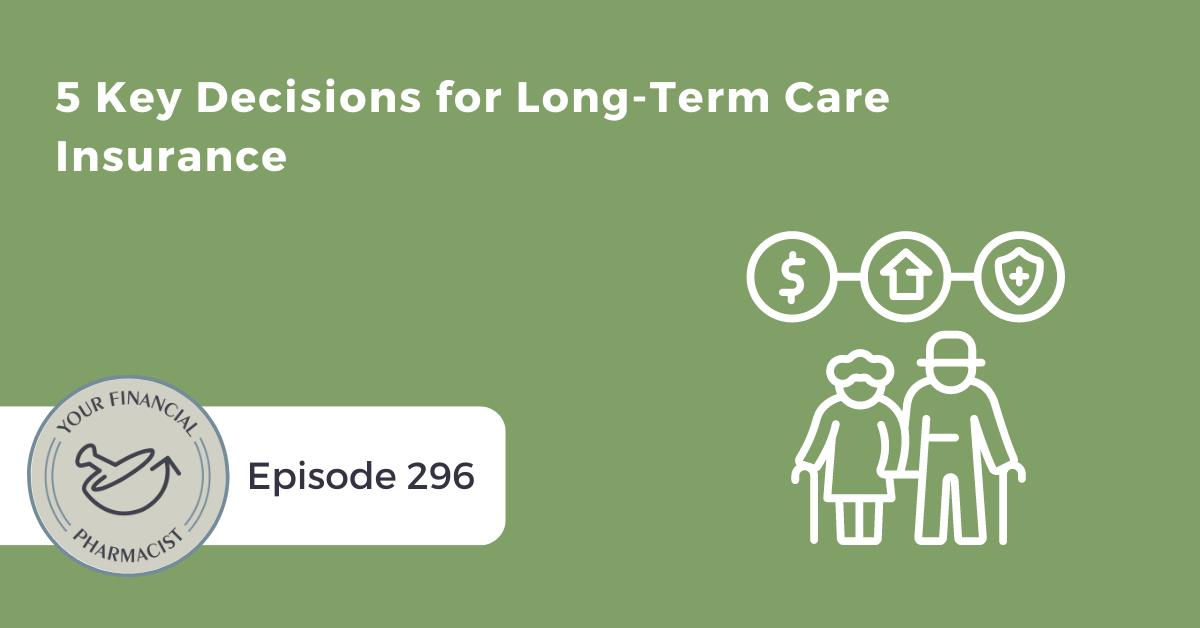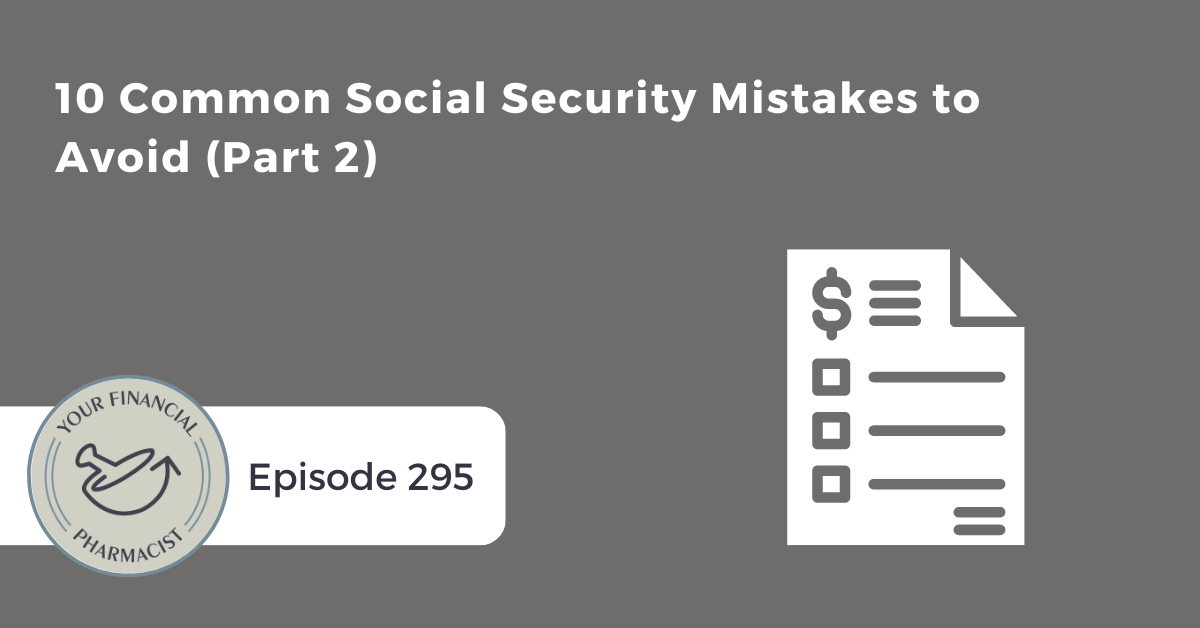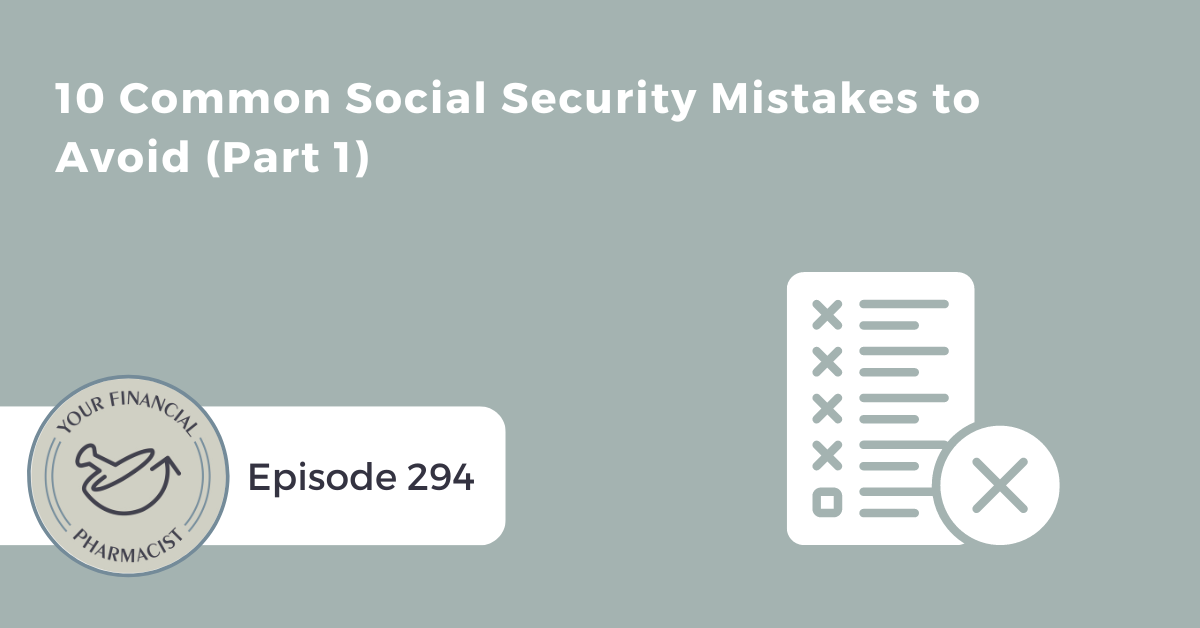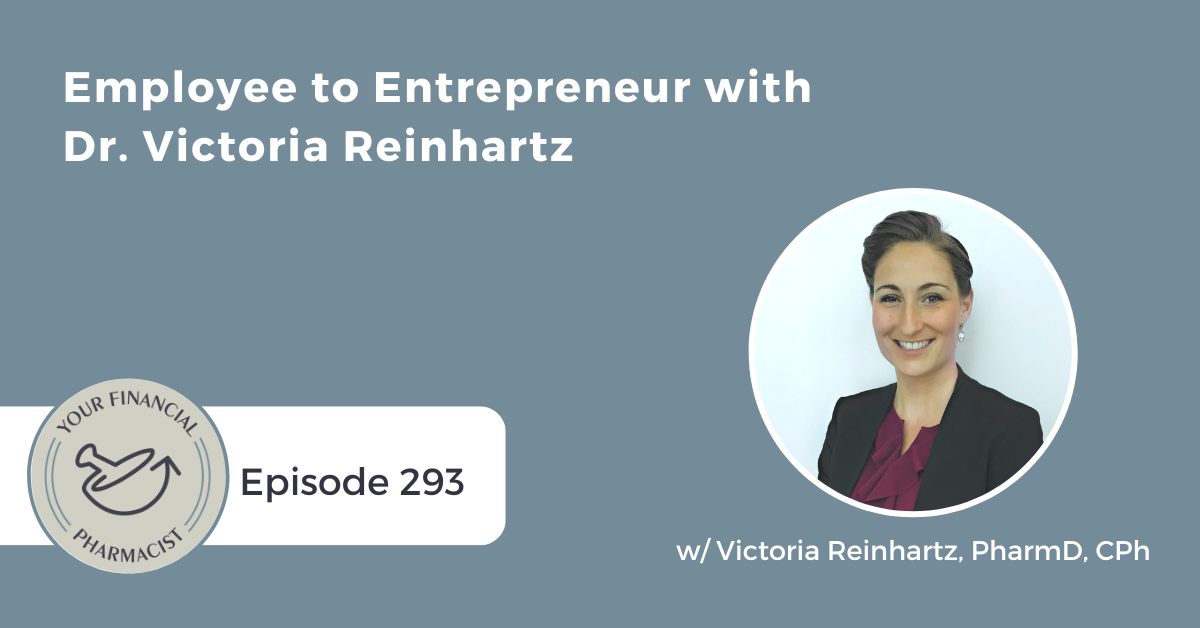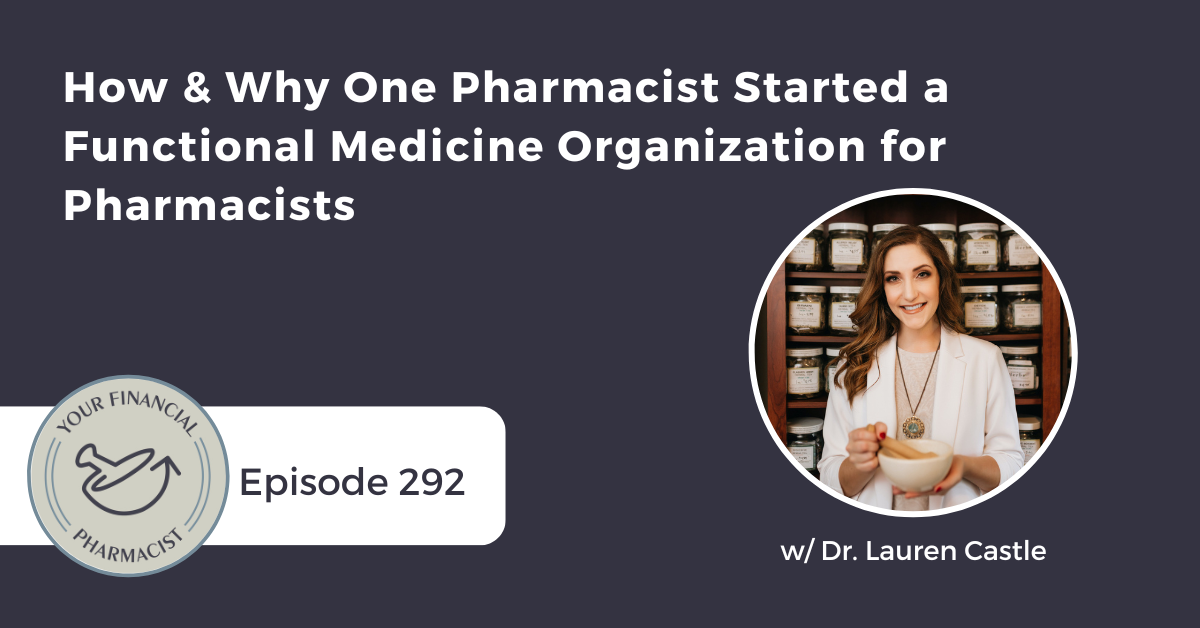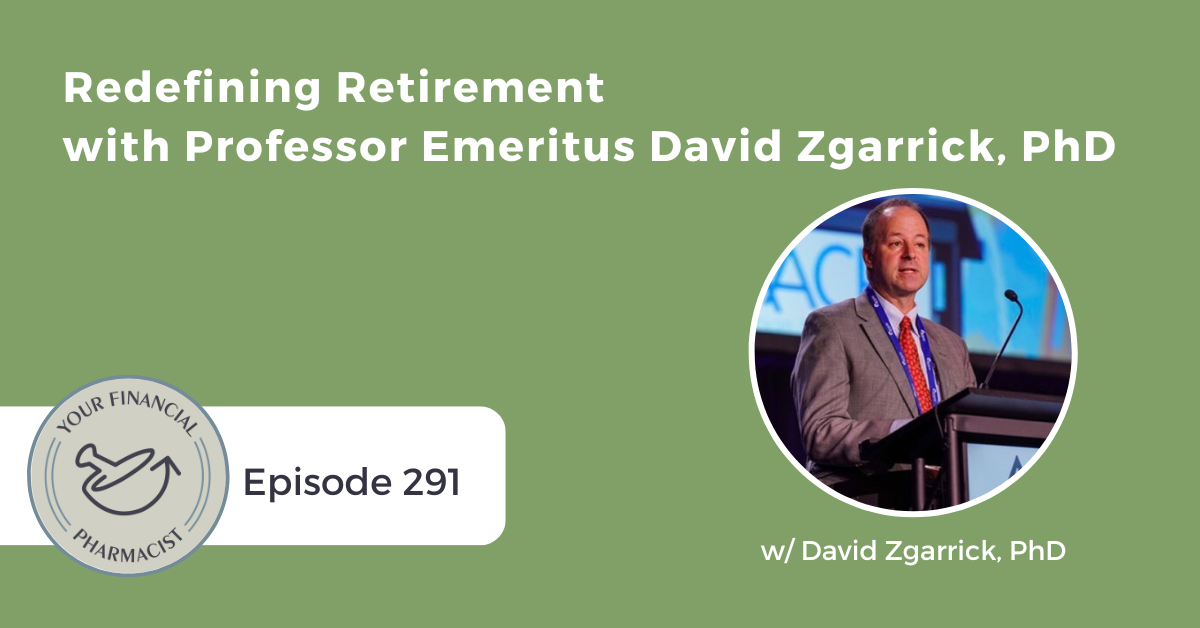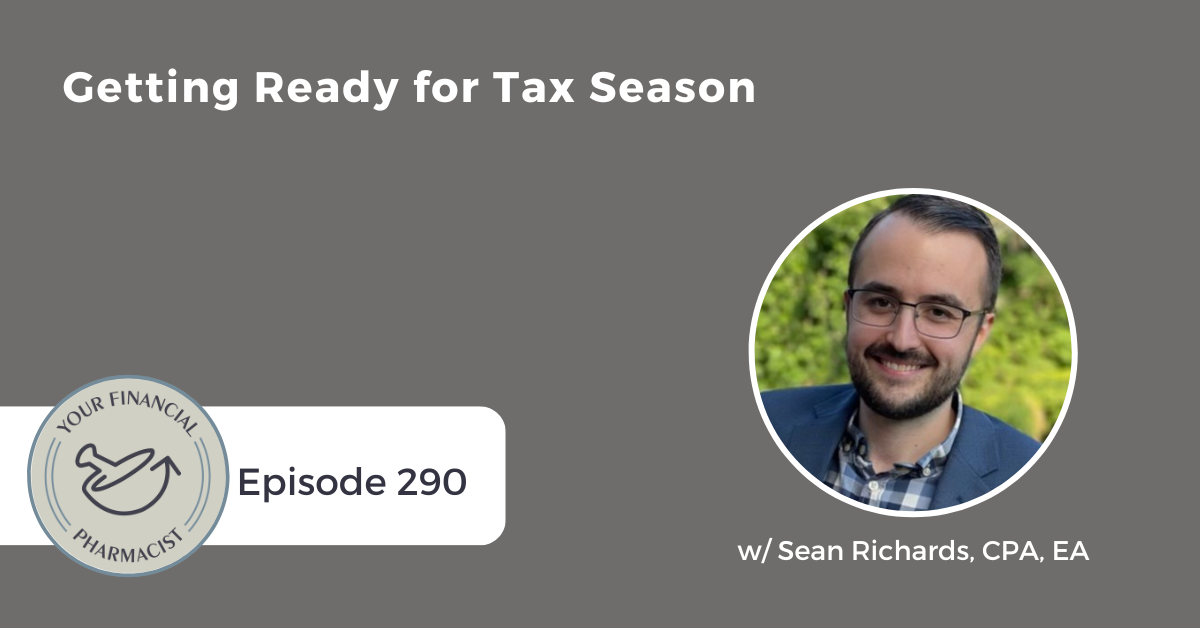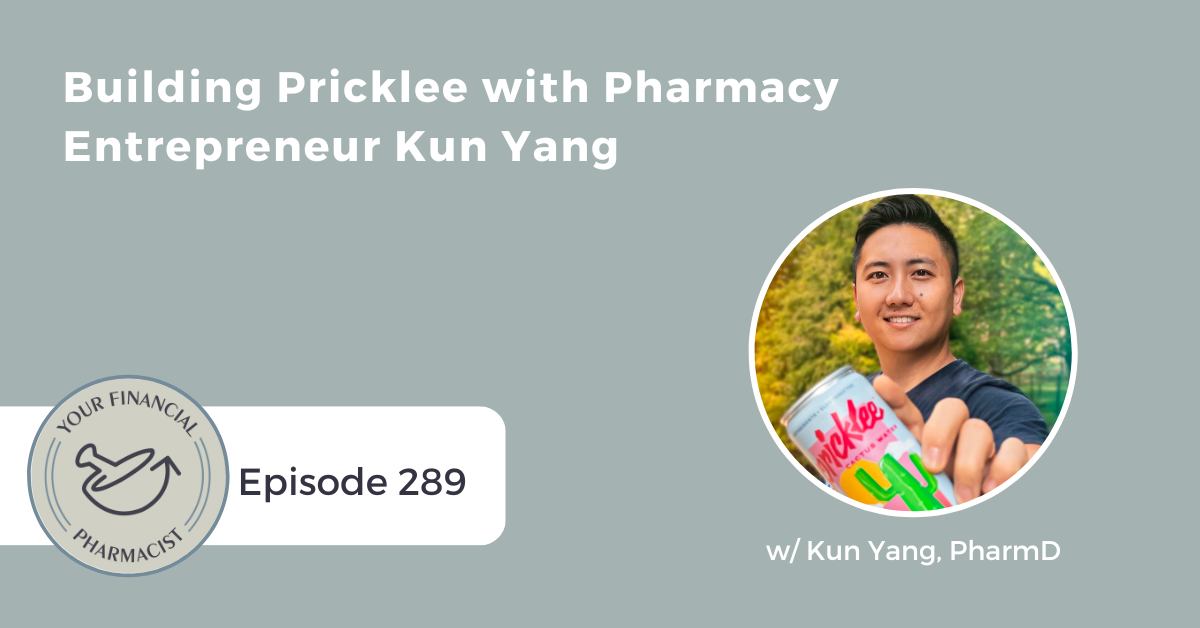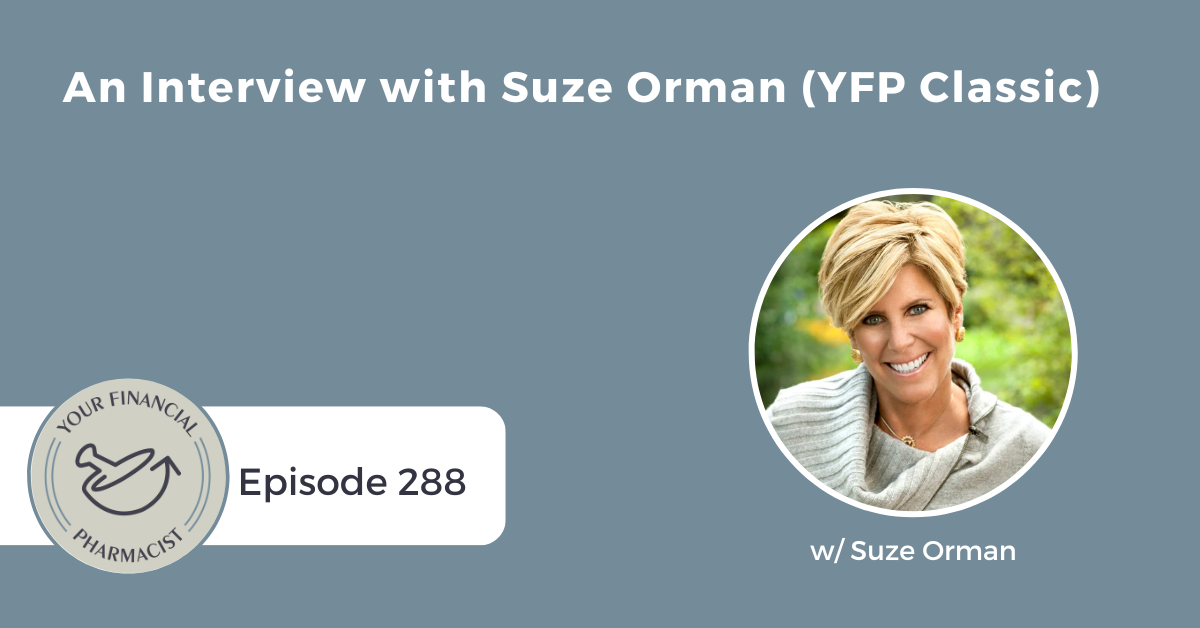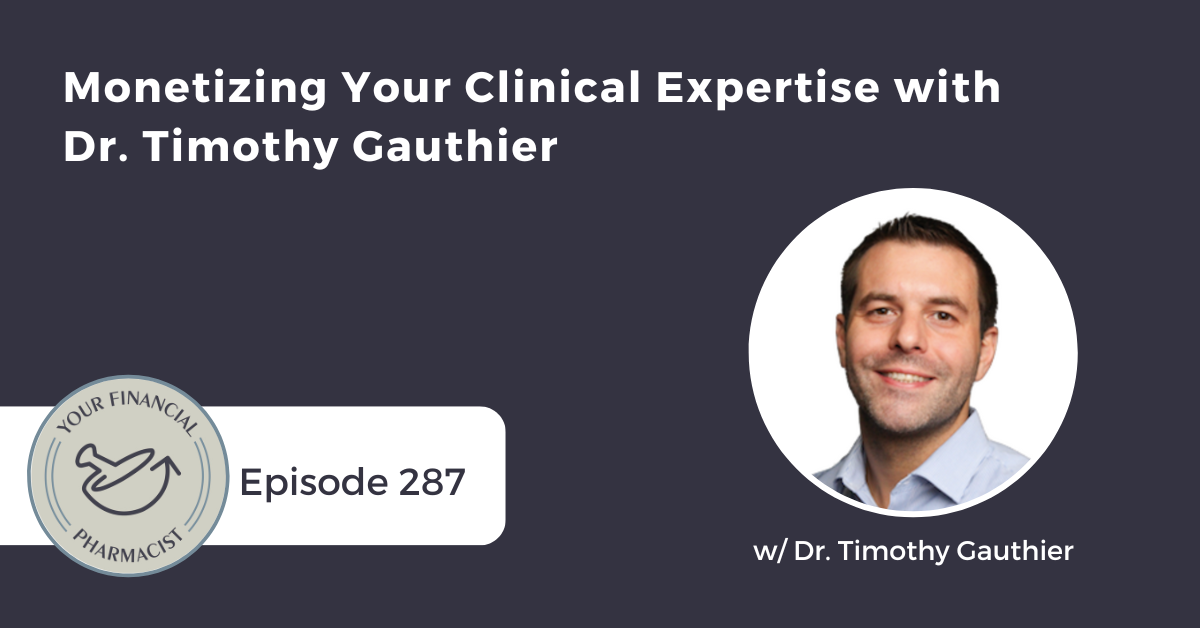YFP Co-Founder & CEO, Tim Ulbrich, PharmD, is joined by YFP Co-Founder & Director of Financial Planning, Tim Baker, CFP®, RLP®, RICP®, to talk about long-term care insurance. During the show, they discuss what long-term care insurance does and does not cover, common misconceptions about long-term care policies, and five key considerations when purchasing a policy.
Episode Summary
This week on the YFP Podcast, YFP Co-Founder & CEO, Tim Ulbrich, PharmD, is joined by YFP Co-Founder & Director of Financial Planning, Tim Baker, CFP®, RLP®, RICP®, to discuss long-term care insurance. Tim Baker explains what a long-term care insurance policy is and what it does and does not cover. Tim and Tim move through some of the top reasons why someone would need long-term care, necessitating a long-term care insurance policy, and how that policy is triggered and paid out. Three common misconceptions surrounding long-term care insurance policies are mentioned, including thinking that medicare will cover all long-term care needs, optimism bias, and the belief that long-term care insurance policies are too expensive.
In the second half of the episode, Tim and Tim address five key considerations when contemplating a long-term care policy, including when to look to purchase a long-term care policy, choosing a monthly benefit, choosing a deductible, deciding how long the benefit will be paid, and determining whether or not to have inflation protection on a policy. Tim and Tim wrap the episode with examples of different deductibles, benefit details, and policy costs. Listeners will hear realistic examples of long-term care policy details and may be surprised about the outcomes.
Links Mentioned in Today’s Episode
- YFP Planning: Financial Planning for Pharmacists
- Schedule a free Discovery Call with YFP Planning
- Lincoln Financial Group Study Finds Misconceptions and Confusion About the Increasing Need for Long-Term Care Planning in America
- YFP 108: How to Effectively Talk with Mom & Dad About Their Finances
- Your Financial Pharmacist Disclaimer and Disclosures
Episode Transcript
[INTRODUCTION]
[00:00:00] TU: Hey, everybody. Tim Ulbrich here, and thank you for listening to the YFP Podcast, where each week we strive to inspire and encourage you on your path towards achieving financial freedom.
This week, Tim Baker and I talk through a topic which we have not yet covered in detail on the show, and that is long-term care insurance. During the show, we discuss what long-term care insurance is, what it does and does not cover, and common misperceptions surrounding these policies. We also discuss five key considerations when purchasing a policy, including when to purchase one, what to consider in terms of a monthly benefit and deductible, whether or not it’s worth having inflation protection on a policy, and how long to determine that benefit will be paid.
Before we jump into our discussion around long-term care insurance policies, I recognize that many listeners may not be aware of what the team at YFP Planning does in working one-on-one with more than 280 households in 40-plus states. YFP Planning offers fee-only high-touch financial planning that is customized to the pharmacy professional. If you’re interested in learning more about how working one-on-one with a certified financial planner may help you achieve your financial goals, you can book a free discovery call at yfpplanning.com. Whether or not YFP Planning’s financial planning services are a good fit for you, know that we appreciate your support of this podcast and our mission to help pharmacists achieve financial freedom.
[INTERVIEW]
[00:01:21] TU: Tim Baker, welcome back to the show.
[00:01:23] TB: Thanks, Tim. Happy to be here. What’s going on?
[00:01:25] TU: Excited to be continuing this journey on covering some of the topics for pharmacists that are listening in the second half of their career. We’re going to do that breaking down some of the long-term care insurance in terms of who needs it, what does it cover, how do you evaluate different factors when purchasing a policy.
Tim, we’ve talked a lot about insurance on the show, health and home, auto, life, disability. But we haven’t really discussed long-term care insurance in detail. Our hope is whether someone’s at the front end of their career and they’re listening, just to gather some more information or learn about what this may entail later in their career, later in their life, or perhaps folks that are in the position of purchasing these policies right now or soon to be, that they’ll be able to take away an important part of the plan that probably is not talked about as enough. Would you agree?
[00:02:18] TB: It definitely is, and I think even my own thoughts have kind of evolved on this. I kind of came into the industry where we would have long-term care insurance policies in place, and they were just – The premiums were crazy, and there’s a lot of reasons why this type of insurance has kind of evolved over time. A lot of it’s like just there wasn’t a whole lot of information out there. We can kind of talk through that, but it is an important thing.
I think when people live in longer, it’s definitely one of those things that I think at the fall, a lot of people are like, “Ah, it won’t happen to me,” or, “I don’t need that.” But as we’ll talk about, it is going to be a major part of the financial plan, and there is long-term care planning, which a lot of people, it’s kind of family and the money that I have. But hopefully, we take this conversation a step further. We talk about long-term care insurance. So I think that’s kind of the point of the conversation today.
[00:03:11] TU: Tim, insurance feels like one of those topics. You and I have talked about this before that when we speak with a group of pharmacists and we bring up the topic of insurance, you can just see eyes gloss over, right? I think that’s natural. I mean, who wants to think about – Whether it’s something like life or disability, it’s not an exciting thing to think about. Same thing here, being in a place where we might need long-term care insurance. Not a very rosy thought, right?
I think also just this concept of playing defense with the financial plan. Even though we know it’s important, it may not feel as exciting or as motivating as some of the investing parts of the plan, for example. So this feels like, Tim, a topic that we know is important. We’ve got to really translate that knowledge and perhaps have some accountability from a planner and someone that’s helping us to implement this, knowing that our tendency might be to mitigate and underestimate the risk and not focus on it as much as we do other parts of the plan.
[00:04:08] TB: Yeah. It’s just like, yeah, anything that we kind of put under like the wealth protection, whether that’s estate planning. Nobody wants to talk about their premature death or what’s going to happen to their kids or that type of thing or life insurance or even the disability insurance. They’re just not fun topics. But I think we as fiduciaries, we get to have these conversations with clients and have them think about it at the end of the day, right? Like what we’re trying to do is provide options and provide a path forward for them to kind of get from A to Z. Z, hopefully, as a financial freedom in a lifestyle that works for them.
But along the way, there are pitfalls, and life comes at you fast. This is definitely one of the ones where it’s like, “Hey, I wish I would have done that or –” Again, I think so many financial advisors themselves chalk this up to like, “Hey, we’re just going to plan for this as it comes.” But I think the way the policies are written now, they’re a lot more – They’re priced, I think, better, and I think they should be something that are considered as part of the financial plan in general.
[00:05:14] TU: So, Tim, before we break down five key decisions that someone should consider as they’re evaluating a long-term care insurance policy, let’s talk through some of the background first. What exactly is long-term care insurance?
[00:05:27] TB: It is a product that’s really meant to mitigate the major risks in retirement, one of the major risks in retirement, which is long-term care risk, which, Tim, is the inability to care for yourself. Again, we’ll talk about what triggers this in terms of the things that you do as a part of your daily life. But as you get older, cognitively, physically, there’s a chance that you can’t care for yourself. So then what do you do? By default, a lot of people will kind of fall back on their family and that type of help.
So what-long term care insurance is it’s a policy that provides for a broad range of skilled custodial and other services provided over an extended period of time, typically, to like chronic illness, a physical disability, or a cognitive impairment. So as I mentioned, the default is that a lot of people that don’t have these policies, they rely on unpaid family members. So 80% of care usually comes from a family member, which can be negative to that particular family member, their own mental health and financial resources, professional status. 20 hours on average per week is what an unpaid family member will get. Like I said, it can negatively impact the caregiver’s health and career, if it’s for an extended period of time.
Probably, unsurprisingly, I would say, Tim, the top reasons that long-term care really is needed is due to Alzheimer’s. That’s the number one. But the second one kind of surprised me. Arthritis was the second the second one and then cancer stroke. Then the fifth one was nervous system conditions. So the insurance really is a product that is meant to pay out. Typically, it’s a monthly amount to the insured to be able to basically pay it for paid care, whether that’s skilled or unskilled. We’ll kind of talk about that in a bit, but that’s really what long-term care insurances is.
[00:07:31] TU: I think, Tim, the classic example I always think about here is Alzheimer’s, right? As you mentioned, number one on the list, right? This is a condition that many of us probably had a loved one that we’re familiar with. You see the impact in terms of the progression of the disease, the level of care that’s needed, both financially and time, as you mentioned, caregivers within the family.
But also, unlike some other conditions that may have a shorter lifespan, folks with Alzheimer’s can live a longer period of time, in a state where there’s a lot of care that’s needed. So I know personally, that’s what I have to think about in terms of mitigating the risk financially to my family or my boys as they get older, if Jess or I were to have Alzheimer’s. That seems like the classic example where while there could be a long period of time where care is needed, both financially, as well as the time intensity to provide that care.
[00:08:22] TB: Yeah. I mean, that – I think that’s it. We’ll talk about misconceptions. But I think that is dead on. I think when most people think about long-term care, though, they think about being stuck in a nursing home. It being really expensive, which is true. But a lot of the industry, what we’re really trying to pivot to is kind of that aging in place.
A lot of these policies that we’ll talk about more is the insurance companies, they recognize that the cheapest way to age is to age in the home. So they’re going to do whatever they can to kind of keep you in place. So whether that’s ramps, handles for your shower, things like that. A lot of these policies have these written in as almost like add-ons because the longer that you can stay in a home and age in your home, the better.
I think that’s the direction that planners should really go is at a minimum, provide a benefit that really allows you to age in place, age in your home as long as possible. So you don’t have to be in the nursing home. That’s where care gets really expensive and probably from a cognitive mental perspective, the patient not in as good a place, so.
[00:09:26] TU: Tim, you talked about common misperceptions. What are some of the main ones that you see around long-term care insurance?
[00:09:34] TB: Yeah. I think one of them is that Medicare. We kind of talked about this with Social Security. Social Security can – It’s going to pay for everything. We’re good. We’ve been paying into this all our life. We know that’s not true. Another one is that Medicare is going to hook me up if I need to go into a nursing home or even aging in place benefit. That’s really not true. The Medicare is not necessarily meant to cover any kind of care that’s long-term and chronic. So this is where you really have to kind of either, again, self-insure or find your own policy.
Now, Medicaid, Tim, is there to help people in that regard. But that’s where you have to kind of be destitute. But there are strategies that are out there where people will spend down their dollars to kind of qualify for Medicare or Medicaid, if they need it. So the first one is Medicare really doesn’t cover you for long-term care coverage at all. So one of the things is that a lot of people recognize this as a concern. Just like you said, you’re talking about the boys and Jess.
Long-term care is a retirement risk and a concern, but it’s definitely one of these things where optimism bias takes hold, where it’s like that’s, “Ah, that’s a concern but not for me because that’s going to happen to somebody else.” So roughly 60% of the US population will need long-term care services. If you’re 65 today, 70% of people 65 or older will need long-term care services. So this is more than the majority, right. So like that’s important to understand.
Again, if you think about it too because of medicine and advances, like we’re living longer. But sometimes, we’re living longer with a chronic illness that we need some help. So there’s a lot of reasons why I think this number will continue to go north. The last one I would mention is that most believe that long-term care insurance is too expensive. Or just like we talked about with things like education planning, we need 100% solution. We have to have all the bells and whistles that the care is only provided for you at a nursing home.
In reality, again, what we’re trying to do is to establish a policy that pays for care in the home. A lot of the policies now, they used to distinguish between what kind of care you were receiving. But to simplify it, if you qualify for care, whether it’s nursing home or skilled or whatever, at home, it’s still going to pay that amount. So they’ve kind of streamlined these policies to make it easier to understand.
At the end of the day, you don’t need 100% solution. Even if you can put yourself in a position where the benefit that you’re receiving is essentially a 50% coupon, like we’ll take that at this point because that just makes things a lot easier. So those are some of the misconceptions that I think people have with regard to this type of insurance.
[00:12:20] TU: Tim, I want to dig a little bit deeper on a comment you made about optimism bias that I think really gets at the prevalence and the need, right? Anytime we’re looking at an insurance policy, whether it’s long-term disability, term life types of policies, you’re doing this risk evaluation of what’s the cost of the policy, what’s the potential benefit of the policy, and what’s the likelihood that I’m going to need it.
I think early on, I remember learning a lot about long-term disability, and I was caught off guard of, wow, the statistics from the Social Security Administration on the percentage of people that have a disability at some point in their career is much higher that I would have ever anticipated. I think that speaks exactly what you said of, “Hey. Well, I’m relatively young, getting ready to turn 39 tomorrow, relatively young, have been relatively healthy. And therefore, I can’t really visualize a scenario where these policies may be enacted. And, hey, I could use these dollars elsewhere in the plan.”
So same thing here and, of course, we have to mitigate that risk. We have to put that risk into reality, and that’s where, I think, a third party and a coach and a planner can really help. But break this down here. Like what is the true prevalence and need, and what’s the dollars we’re trying to mitigate against here in terms of costs?
[00:13:32] TB: So when we talk about the need, we said about 60% of US population will need long-term care. What’s interesting, though, is less than 10% of people aged 65 and older have a long-term care insurance policy.
[00:13:44] TU: Wow.
[00:13:46] TB: Yeah. We said the stat for that was approximately 70%. So we have 10% that have it. More than 70% age 65 and older are going to need long-term care insurance. So obviously, there’s a huge gap there. Men and women are different. So the average care needed for a man is about 2.2 years. So they’ll need – Once they kind of trigger that policy, it typically pays out 2.2 years.
For women, it’s quite a bit longer, 3.7 years. This is where if you’re a woman and you have a partner, a male partner, this is might be where you link your policies or have a shared policy, which you can do. So it kind of mitigates maybe buying a policy that will cover you for four or five years. 20%, so one in five, will need care for five-plus years. Again, I think some of these numbers will continue to go up.
So there’s lots of – It’s going to be dependent on your area, like where you live, because every state’s going to be different in terms of how much care costs. But one of the metrics that we use, and this is the 2019 metrics, so it’s a little bit dated with pre-COVID and, obviously, inflation being what it was, but a semi-private room in the US for a nursing home costs on average $90,156 a year.
If I’m looking at policies, I’m probably looking at, okay, what will cost me for someone five hours a week, and we’ll talk about this when we talk about breaking down the policy, five days a week, eight hours a day, some type of skilled or intermediate care, what does that cost? Then build it from there. So there’s shades of gray here, Tim, is what I’m trying to say with regard to – We don’t necessarily need a policy that pays that 90k. But maybe a policy that, again, focuses on aging in place that will have people come into the home to assist. So that’s kind of the gist of it.
[00:15:35] TU: So, Tim, when we look at these long-term care insurance policies, my mind is going on a path of like, “Well, what does it cover?” You’ve alluded to a couple things and really like what triggers a policy to pay out. Again, we think about this with long-term disability, and we think about, okay, what defines a disability. There’s some considerations around that, and when would the policy actually get paid out, and what things should we be thinking about. So same thing here, what triggers a policy to pay out and what’s it tend to cover?
[00:16:03] TB: The big things to remember with long-term care insurance policy is what’s called an ADL, an activity of daily living. They’ve actually modify this recently with IADLs, which is related to cognitive function. So an ADL, to go back to that, that is things like can you on your own bathe, dress, keep up personal hygiene, use the bathroom, maintain continence, kind of walk around with what they call mobility inside the house, transfer in and out a bit of a bed or a wheelchair. Typically, if you can’t do two or more of these things, this is where a policy will trigger.
For an IADL, like this is more of a functional thing. So these could be things like shopping for personal items, managing your money, using the phone, preparing a meal, managing medication, or doing housework. If these ADLs are kind of in question, then what happens is that you’ll have an assessment done by a professional that will say, “Hey, this person needs care,” and then the policy will start paying out per the kind of the contract language or the policy.
Some people, they need skilled care kind of right away, where it’s kind of 24 hours a day, and that’s typically if there’s more of like a medical need. Sometimes, if it’s more some of the bathing or some of the cognitive things of like help paying bills, it might be an intermediate, so a couple days a week type of thing. Really, the skilled versus intermediate care is really going to come down to frequency of how much is needed. That’s where an assessment will be done on the person to see, okay, what needs to happen in terms of people coming to the house. Or it could be moving to a facility to get the right care needed.
[00:17:54] TU: Tim, before we transition to really the second half of this show, we’re going to break down some considerations when selecting a long-term care insurance policy. We’ll talk through five specific things here in a little bit. But I think this is a chance, and I didn’t plan for this in the notes, but it just came to mind as you were talking. This really highlights an area where having a fee-only financial planner can be really, really valuable, right? So someone who is helping you evaluate a policy for, hey, what do you need? What are perhaps some things you may not need? What does the rest of your financial position, situation look like? Is self-insurance a possibility? Is it not?
Then, ultimately, when you decide if you’re going to purchase a policy, again, helping vet that and kind of cut through some of the weeds that can often be there in the insurance space, knowing that they aren’t making money off of recommending that policy. Again, I think one of many reasons we see value in the field and the environment where someone can really objectively look across your plan, and you know that there’s really – We’ll never say no bias, right? There’s always bias involved in any decision conversation, but really where you can mitigate those biases, right?
[00:19:01] TB: Yeah. I think anytime that you can separate the sale of a product from advice, that’s a good thing. Now, Tim, I would say that a lot of these policies aren’t being sold. I think a lot of that, it’s funny because Lincoln Financial did a survey on advisor attitudes about long-term care, and 99% of advisors think it is essential for families to discuss long-term care.
However, only 57% of advisors say they talk about it with clients, and I can understand why that is. Again, from my own perspective, it’s like, hey, when I was around long-term care early in my career, it was like, “Man, these premiums are going up every year. It almost feels like your health insurance every year open enrollments like, “Ah.” Everything’s getting more expensive.
Again, I think because of lack of data, but I think because of the low rate, low interest environment, because people were not lapsing on to these policies, all these reasons were why these policies were not good. So I think people or like advisors were a little hesitant to bring it up.
Now, again, long-term care planning should always be discussed. Insurance, I think we’re back to a place where these policies should really be considered. So, yeah, I definitely can see why that is the case. But it’s interesting because, again, we believe that anytime that you can separate the advice from the product and the commission’s involved, that’s a good thing.
[00:20:25] TU: So, Tim, as we look at mitigating this long-term care risk, you mentioned that at the beginning of the show, really there’s two big buckets that I see. One is the potential to self-insure. Then the second is, obviously, to purchase an insurance policy that helps to provide that protection. It feels like, just based off of what you’ve shared so far, that perhaps we have the pie chart a little bit backwards in terms of the number of folks that may need the policy, relative to those that actually have a policy. Meaning that a majority of folks are likely self-insuring now, when, in fact, maybe that should be the other way around.
So talk to us about self-insure. Does that make sense for some folks, and how would that be evaluated?
[00:21:08] TB: Yes. So I think the biggest thing, it kind of goes back to like what are the goals, and what’s the balance sheet look like. To me, this is the conversation. If we are self-insured, like what are the sources of funding that we could tap into and kind of the break the glass scenario? So obviously, looking at the balance sheet with all your assets on the left, all your liabilities in the right, and then understanding, okay, these are –
Again, by default, we’re, obviously, talking about things like cash accounts, retirement accounts, allocating the Social Security check in that way. It could be how do we allocate home equity. There could be government programs out there that do assists, depending on the state and where you’re at. But it, essentially, is like the self-fund is – Then, obviously, the social side of it is do you have family members that can care for you that can help assist with this and the like?
The hybrid approach, which is technically probably not self-funding, but a lot of insurance policies like life insurance now have asset-based or link policies that will provide some type of like rider for long-term care. So although they’re not primarily focused on that type of coverage, there are more policy that do offer that or even like annuities. Sometimes, annuities have long-term care provisions. Those are essentially on the table.
Then finally, the backup for plan for self-funding is Medicaid. So when the money’s gone, you’re kind of at the behest of the Medicaid program and to provide kind of the care that you need. Yeah. So I think the big parts here are what’s your balance sheet look like? Where is this money going to come from for long-term care and then probably where’s the family going to be in this whole picture are kind of the two things that I would focus on with regard to self-insure.
[00:22:54] TU: So for the rest of our discussion, let’s assume that we’re going to evaluate and decide to purchase long-term care insurance policy. Now, it’s really down to what are some things that we should be thinking about, so five key decisions to consider when purchasing a policy.
Number one, Tim, which I think is probably top of mind for everyone is when, right? I’ve heard, generally, mid-50s, but that feels like kind of that blanket advice of is that for everyone. So when should someone be looking to purchase the policy, and why is there potentially this a window of time where it’s optimal?
[00:23:29] TB: Yeah. So probably the conversation should start happening. Believe it or not, Tim, in the decade that I’m in that you are not in as in your 40s, in your late-40s, I think that’s probably when the conversation should start happening amongst family members or even your advisor.
To purchase a policy, probably you’re correct. In your 50s is preferable. The average age of a purchase for long-term care insurance policies is 57. So that seems to be the sweet spot. Once you get into your 60s and 70s, the number of people who are denied coverage quadruples, and that’s typically because things like prescription and medications for this ailment or that ailment kind of increase. So you’re either denied coverage because of things like that, or the policies are just that much more expensive.
Yeah. I think conversation in your late 40s and then start putting the pieces together in your 50s and to get a policy in place at a minimal, minimum to cover kind of that whole aging in place idea. So that’s kind of where we’re at.
[00:24:32] TU: Sort of broad level, we’re trying to play this dance between too early. Maybe a higher likelihood of getting coverage but, obviously, paying premiums for a longer period of time, and there is potentially a too early and then, as you mentioned, maybe a too late, where the amount of people that are denied coverage goes up. So finding that sweet spot and then taking a step back because you’re talking about how does this fit in with the rest of the plan in terms of cash flow in that policy.
Tim, number two is choosing a monthly benefit in terms of five key decisions to consider in purchasing your policy. So how does someone start to really determine what is the monthly benefit that I need? Obviously, that’s going to feed into what that policy is going to cost.
[00:25:15] TB: I think at a baseline, we should consider a benefit that covers the typical cost of like care in the home, since, again, that’s 80% of where care is provided. So if we say we need someone to come in to help eight hours a day, five days a week, we think that, on average, and again some of these numbers might be a little bit dated, but we’ll say we need a benefit that pays out 5,000 to 6,000 dollars per month because that’s the average cost for care like that. That’s, I think, where I would start, and I would look at it as a monthly benefit.
Again, back in the day, they had – If you needed care on this day, they would say, “Okay, you have a daily benefit versus a monthly benefit.” Most people look at this as a monthly benefit. So we’re looking at 5,000 to 6,000 dollars per month to kind of provide that baseline. I think that would be where I would start.
[00:26:07] TU: Hold that thought. Obviously, this isn’t advice. There’s lots of factors that are going to go into what exactly is that number for you. But hold that number in mind in terms of benefit five to six. We’re going to come back at the end and talk about a couple of case studies and just kind of ballpark what these policies might cost to get a benefit near or somewhere around that level.
Tim, number three is choose a deductible. So talk to us about making this choice and how the elimination period factors in and what that means.
[00:26:35] TB: Yeah. So just like a disability insurance policy, your deductible is paid in time. The time period is called the elimination period. So once someone kind of assesses that, me as the insured, I need help with one or two or more of the ADLs. That’s when the clock essentially starts. So let’s say it is January 1st. Then if my elimination period is 90 days, essentially, if it’s on a calendar day elimination period, then I start receiving my benefit April 1st. So 90 days have elapsed.
The other thing that can be written as a service is it could be a service day elimination period, not a calendar elimination. So a service day is if I’m only deemed that I need three days of care per week, and I have a 90-day elimination period, that could take substantially longer to basically get that benefit. So if we’re trying to get care to stay at home, I think sooner is better. I think a 90-day elimination period is probably a good baseline to use. So that’s kind of how I would look at that as. It’s the time that you have to wait for that benefit to be paid out. You pay your deductible in time, not necessarily dollars.
[00:27:49] TU: So we talked so far, Tim, about when potentially to purchase a policy, how to choose a monthly benefit, how to choose a deductible. The fourth consideration is deciding how long the benefit will be paid. Again, we keep coming back to long-term disability. The time, length of the policy can vary. Here we’re talking about the same thing, which is what’s the potential total bucket of the money that’s needed. So tell us more about how to consider this. This seems like a hard one to predict.
[00:28:17] TB: Yeah, it is. Again, if we look at kind of the average day, and we say that a female needs 3.7 years, then we might price a policy out for her that’s four years, 48 months. So we take that as kind of our number of months, and then we multiply it by – We’re going to say we need at least a $5,000 monthly benefit based on how much that five days by eight hours cost in the area that I’m living in. So 48 months times $5,000 is a $240,000 bucket. Essentially, that is kind of the money that you’re drawing on. So that’s the way that I would think about it.
I think a way to kind of really drive down costs is if you have – If you’re a couple, and this isn’t – You don’t even have to be a married couple. But if you’re a couple, you can kind of connect the buckets with a rider. Again, if I’m thinking as a male like, “Oh, I don’t really need this,” I can, essentially, leave my bucket to Shay as kind of a contingent plan when I kind of pass away. That rider allows you to kind of link your buckets together. So it’s an NF2 versus NF1, which is a beneficial thing when we’re looking at how long the benefit will pay the individuals on the policy.
[00:29:30] TU: Tim, would that be like I have a policy, Jess has a policy, and then we both have a rider that links them? Or is that the strategy of like one person has a policy, and the other is linked, but they also don’t have a policy? How does that work?
[00:29:43] TB: It’s more of the second one. It’s like you kind of are both named on the one policy.
[00:29:47] TU: Okay. Got it.
[00:29:48] TB: Then it’s kind of a shared bucket for kind of your gender and age.
[00:29:53] TU: That’s cool. I never heard of that before. So I learned something new today. It’s awesome. All right, number five, which is timely, consider inflation and, as well, as we just talked about some of the inflation protection and the benefits of Social Security having that provision. So number five, determining whether or not we need inflation protection on a policy. Tim, is this worth the additional costs? How does someone evaluate this?
[00:30:15] TB: This is probably one of the most expensive things on a policy because as you can see, especially a year over a year, how much inflation we’ve kind of experienced. So this would be probably one of the first things that I would downgrade from a policy. If you look at homecare cost, usually, it’s about one to two percent per year that it’s gone up, believe it or not. So there might be where you’re not necessarily linked to like a COLA, but it’s a flat 1%, 2%.
That known quantity of one or two percent or whatever you select is a lot easier to be priced into a policy versus an unknown inflation that we just don’t know about. So that would probably be where I would cut. Obviously, it diminishes your purchasing power in the future. But it’s usually one of the things that drives the premium up in a policy.
So I would say that might be if you get the sticker shock with, wow, that’s a lot with the inflation protected, I would price it without it or price it with a moderate one to two percent, and then see how that affects the price.
[00:31:18] TU: And hope we don’t have eight percent, right, and inflation long term?
[00:31:23] TB: Yeah. Although on the flip side of that, typically, a higher inflation market is better for these insurance companies to keep these policy, that was one of the things that they had thought that the inflation was going to be higher than it was. But because a lot of this has to be secured, like how they’re investing this money is very conservative. So if you’re paying 7% versus 2.5 or 3 percent, it should be a little bit of a benefit to the policy holder because the premium shouldn’t be as expensive in a higher interest rate environment, if that makes sense.
[00:31:56] TU: Yep, absolutely. Tim, let’s wrap up with a couple examples where we can start to bring this to life with individuals at certain ages and how much benefit they may need and for how long and then what that might actually look like in terms of premium costs throughout the course of the year. So you want to talk us through a couple of these?
[00:32:16] TB: Yeah. So I really have kind of an example that shows a couple. So one of the studies – I don’t know if this was Lincoln as well. But they kind of surveyed couples and asked like how much they would be willing to pay for long-term care insurance. The number was right in that kind of 2500 to 3,000 dollars per year. The example that I’m going to show, it kind of shows around that $3,000 like premium. So if we have a 55-year-old couple in this first plan, they had that shared care, so it’s a link benefit, it’s kind of a regular rate. So just like life insurance, you could be preferred, which is kind of top of the line. Regular rate is kind of average health.
If we’re looking at a $9,000 per month benefit with no inflation rider, there’s four years of coverage, so essentially two per person. But, again, it’s linked. That gives us basically a $460,000 gross benefit, and the premium for that is just under $3,100, $3,094 per year. So again, if I’m looking at this couple, and I’m like, “Hey, there’s no inflation rider, but you get $9,000 a month for four years,” it’s almost a half a million dollar bucket. Like is that worth $3,100 per year? Studies show that most people would jump at that.
[00:33:36] TU: That’s lower than I would have thought, to be honest.
[00:33:39] TB: Hey, when I was learning about this too, like learn about this, me too. Like I was kind of floored by that.
[00:33:43] TU: Is that fixed? Or does that go up, the policy? Can that rise?
[00:33:47] TB: It can go up. Like the premium can go up. But I think because of – So like back in the day, this policy might cost like half of this. But then because we didn’t have the right data and all those reasons that we were talking about, the premium will go up substantially. We’re not seeing that as much in terms of the huge jumps in premium because of, again, they miscalculated the mortality and the morbidity risk back in the day. The lapse assumptions were they thought that 5% of policies would lapse was closer to like 1% back in the day. So now, because of the information is a little bit better, you shouldn’t see that jump covered.
Now, that is one of the benefits, Tim. We talked about one of those hybrid policies with like a whole life policy. Those premiums are set. So one of the things that is the advantage of the hybrid policies that you don’t have those jumps in premiums that you would potentially in a more of a traditional plan. But I would say that they’re priced a little bit better from the jump, you’re not going to see that. So that’s the policy without that inflation rider.
[00:34:50] TU: Tim, I’m wondering if many people are kind of having the thought I am in the moment. As I look at this and I’m kind of seeing this for the first time, as you’re talking about it, and we prep for the show, like that is lower than I would have anticipated for more benefit. I mean, you talked about some ranges, kind of a baseline floor, not advice, but generally speaking, 5,000 to 6,000 dollars per month.
This policy here, if I heard you correctly, was a little bit higher right now, 9,000 per month, didn’t have an inflation rider. But it did have that benefit between the couples that you talked about, and that doesn’t seem crazy high. So I guess what I’m wondering is if many folks are listening, like myself that have parents either in or nearing retirement, like, hey, maybe this isn’t a decision for me right here in this moment. But, hey, what about my parents? Like are they adequately covered, and do they have maybe some of these common misperceptions around long-term care insurance? Could I, should I initiate a conversation, right?
It’s reminded me back of when we had Cameron Huddleston on the show, who wrote Mom and Dad, We Need to Talk, all about engaging in financial conversations with our parents. They may not be comfortable. But if I think about where the care often may fall financially and time on the children like selfishly, like should this be a conversation we’re initiating?
[00:36:08] TB: Well, yeah, and a lot of the conversation that we’re having and a lot of that based on Cameron’s book that we’re having with the younger clients is, obviously, they need to get their own estate plan in place. But is your parent’s estate plan in place because, ultimately, that’s going to affect you. The same is true for this.
So although my parents have always told me like they never want to be a burden and put me out on the ice flow, like that’s fine with us, at the end of the day, like we’re not going to not care for our family. We’re going to do the best we can do kind of either in time or dollars to make sure that they’re okay. So, yeah, I mean, it’s definitely something that it’s a conversation that we should have, and that’s so much about financial planning.
Most people probably not even on the radar. As a professional, I would say, two or three, four years ago, this wasn’t on my radar, just because of the experience that I had with policies early in my career. But to me, I think it’s important to at least have the conversation with your advisor, with your loved ones about what are the options.
[00:37:12] TU: Yeah. I guess what I’m thinking about here and, again, somewhat selfishly, and shout out to my parents who have done an awesome job, both tidying up this part of the plan, as well as communicating it with my brother and I, which I think is the other piece is like there’s the action or the inaction. But then there’s the actual conversations as well of like is everyone aware. So we have an estate plan or we have this long-term care insurance policy or we don’t. But are we all aware, and are we having an open conversation about it? I think that’s so helpful.
But as I look at these numbers, and we think about maybe somebody who’s in their early to mid-50s, with elderly parents, and what may happen in terms of long-term care risks, like that could be catastrophic on their financial plan. But the amount of these policies is not catastrophic. So I think that this is just another great example. We’re actually going to bring Cameron back on the show, I think, middle of this year to have some more of these conversations about the emotional side of the planet. How do we engage in those conversations, especially when it’s with our parents? So this was a great reminder of that.
[00:38:15] TB: Yeah. Tim, if I could go down, I want to kind of use a similar example. But this this is with a policy that has an inflation rider, just so you can see the difference.
[00:38:23] TU: Yep.
[00:38:24] TB: So a 55-year-old couple, shared care, regular rate. This time, they start with a lower benefit because they’re going to put the inflation rider. So instead of it being 9,000, whereas the one was higher because there was no inflation rider. So this is $4,100 per month, same coverage, four years of coverage, two per person. The starting benefit is not the 460,000. It’s the 210,000. But we know it’s inflation-protected.
So that gross benefit, when you factor that in, it’s a 509,000 worth benefit, but the premium for this is just under 3,000, 2,956. So less than half of the benefits of 4,100 versus 9,000, but the premium was about level or about 100 bucks apart. So you can see how that inflation rider can really be expensive. It’s just a matter of like do you want to start with a lower amount of coverage with the inflation rider or maybe a higher amount to kind of get to where you need? But again, some of these numbers, again, surprising to me when I initially saw these.
[00:39:25] TU: Tim, as I’m looking at the numbers here and the two examples, like it’s a really cool example and reminder, especially when shopping for insurance. Like design the need of what you want from a policy and then shop accordingly versus shopping from the monthly amount, right? Which I think is our tendency of what the budget might afford or might fit in.
But here you have two examples where the yearly amount is, essentially, the same. It’s within $100, actually closer to like 50, 60 bucks. So essentially, the same over the course of the year, but two very different constructs and designs of these policies. So what do you need? What do you not need? Then going from there.
Tim, [inaudible 00:40:01]. We talked about it in kind of a siloed approach of, hey, you may self-insure, or you’re going to buy a policy. But probably for many folks, it’s maybe a little bit of both, right?
[00:40:11] TB: I think it often comes down to kind of, yeah, a hybrid approach, where it might be a mix of self-funding, maybe some creative housing decisions in terms of how to use equity in the house or maybe moving in with loved ones. It could be, again, what is the family support. But then, hopefully, at a minimum, maybe a baseline long-term care insurance policy. So I think that’s often the case with a lot of things. It’s not kind of a binary A or B choice. It’s kind of a mix of a lot of things.
Again, I think that’s where these conversations are so important. Having a handle on the balance sheet is so important, and then having a handle on what your goals are, what are the resources that are available to you to kind of allow you to age gracefully, so to speak, and make sure that you’re cared for, and you’re living a wealthy life. So, yeah, I think, hopefully. Like you said, we haven’t talked about this a lot. I think it needs to be talked about more, and just figure out what is best for you and your family.
[00:41:11] TU: Great stuff, as always, Tim, and yet another example of a part of the financial plan where, ideally, we’re not making these decisions in a silo, right? We’re looking across the spectrum of the financial plan. You mentioned several examples throughout this episode, where determining what we do or don’t need with long-term care insurance, which, of course, we’re looking at just one sliver of the whole plan, is dependent on what else is going on. So I think just another reminder, the value of having a coach, having a planner in your corner.
Whether you’re someone listening who’s on the front end of your career and you’re thinking about this way off into the distance or perhaps thinking about this for your parents or for folks that are in the middle of evaluating shopping these policies, we’d love to have the chance to talk with you, to talk more about our one-on-one comprehensive financial planning services, what they are, how insurance among many other parts of the financial planner included in that engagement.
For folks that want to learn more, you can book a free discovery call with Justin Woods, a pharmacist on our team, by going to yfpplanning.com. We’ll also link directly into the show notes the link where you can book a call with him.
Tim, thanks so much and looking forward to continuing this conversation.
[00:42:19] TB: You got it.
[END OF INTERVIEW]
[00:42:20] TU: As we conclude this week’s podcast, an important reminder that the content on this show is provided to you for informational purposes only and is not intended to provide and should not be relied on for investment or any other advice. Information in the podcast and corresponding materials should not be construed as a solicitation or offer to buy or sell any investment or related financial products. We urge listeners to consult with a financial advisor with respect to any investment.
Furthermore, the information contained in our archived newsletters, blog posts, and podcasts is not updated and may not be accurate at the time you listen to it on the podcast. Opinions and analyses expressed herein are solely those of Your Financial Pharmacist, unless otherwise noted, and constitute judgments as of the dates published. Such information may contain forward-looking statements that are not intended to be guarantees of future events. Actual results could differ materially from those anticipated in the forward-looking statements. For more information, please visit yourfinancialpharmacist.com/disclaimer.
Thank you, again, for your support of the Your Financial Pharmacist Podcast. Have a great rest of your week.
[END]
Current Student Loan Refinance Offers
Note: Referral fees from affiliate links in this table are sent to the non-profit YFP Gives. | Bonus | Starting Rates | About | YFP Gives accepts advertising compensation from companies that appear on this site, which impacts the location and order in which brands (and/or their products) are presented, and also impacts the score that is assigned to it. Company lists on this page DO NOT imply endorsement. We do not feature all providers on the market. |
$750* Loans ≥150K = $750* ≥50K-150k = $300 | Fixed: 4.89%+ APR (with autopay) | A marketplace that compares multiple lenders that are credit unions and local banks | ||
$500* Loans ≥50K = $500 | Variable: 4.99%+ (with autopay)* Fixed: 4.96%+ (with autopay)** Read rates and terms at SplashFinancial.com | Splash is a marketplace with loans available from an exclusive network of credit unions and banks as well as U-Fi, Laurenl Road, and PenFed |

